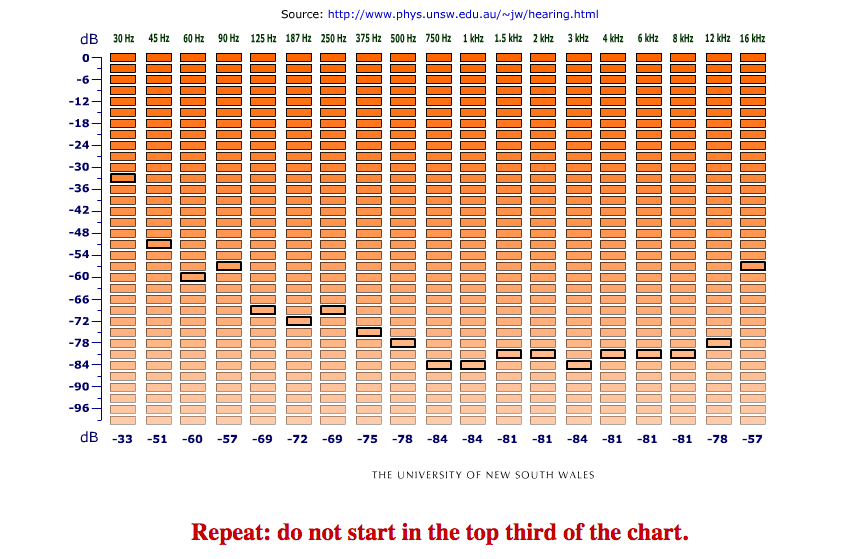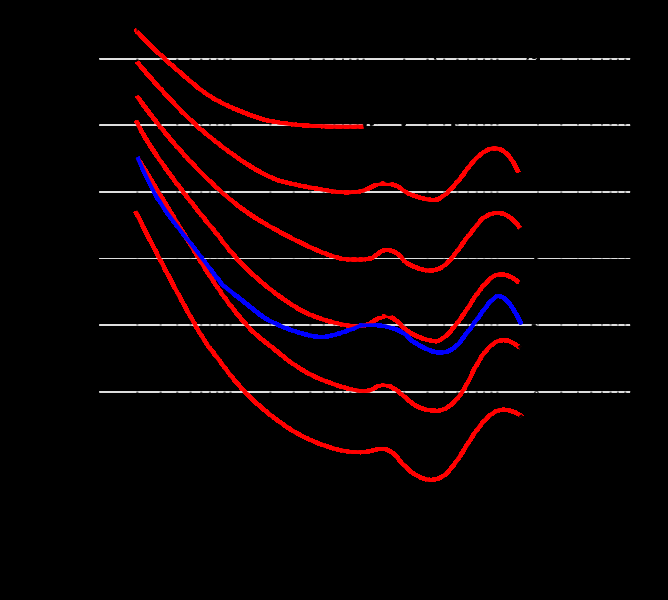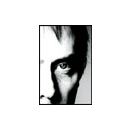Test auditivo, se pueden controlar los db's por frecuencia

OFERTAS Ver todas
-
-6%Elektron Digitakt II (B-Stock)
-
-7%Modal Argon8 (B-Stock)
-
-30%Behringer X-Touch Compact


Harpo Reloaded escribió:Y cuanta ganancia se le debe dar a los auriculares?
Ni idea harpo, lo utilizé el año pasado y ahora lo he hecho con los monitores a 3 metros de mi y yo de lao xd
Creo que debes ir a 1khz y ajustarlo al punto que te sea agradable.
In the 1 kHz column, choose a panel about halfway down. Listen to it and check that (i) it is not uncomfortably loud and (ii) it is considerably louder than the background noise. Go up or down the column if necessary until these conditions are satisfied. Notice that the dB level chosen is now recorded at the bottom of the chart. Once you have made a choice, this becomes your reference sound.
Y más abajo dice que si quieres unas medidas más precisas tienes que calibrar con un micrófono con buena respuesta plana, creo vamos...
Calibration and improvements. It is possible to improve the accuracy of measurements made using this service by calibrating the response of your sound card and headphones, using a small microphone with good frequency response. (Microphones usually have much flatter frequency response than do speakers, so even a quite cheap electret microphone can be useful.) Connect the microphone to an oscilloscope or to the input of the sound card of a second computer. Using high but not painful sound levels, play sound files with the same amplitude (i.e. click on panels in the same row) and measure the variation in the recorded AC voltage for different frequencies. This works at low frequencies, but for the highest frequencies the sound level varies considerably within the headphone itself. Microphones often come with a calibration curve, or a sensitivity rating in volts/pascal. Using this you can convert the values measured with the microphone to the standard expressions of sound level, in dB with respect to 20 µPa.
Hilos similares
Nuevo post
Regístrate o identifícate para poder postear en este hilo







